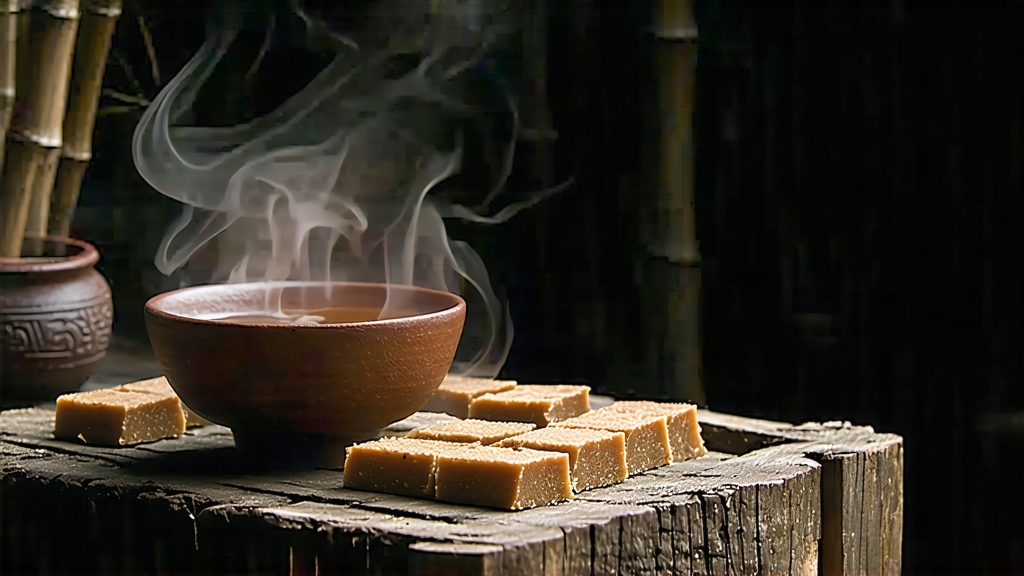
Tucked away in the humid, karst-pocked mountains of southern Guangxi, Liu Bao tea has spent four centuries quietly perfecting the art of graceful aging while its more famous cousin, Pu-erh, soaked up the global spotlight. To the uninitiated, Liu Bao is simply another dark tea—one more brick of fermented leaves in a world already awash with post-fermented promises. Yet one sip of a well-cellared 1996 basket-aged Liu Bao reveals why Guangxi traders once risked bandits, malaria, and treacherous rivers to float this tea down the Xun Jiang toward Hong Kong and, eventually, Southeast Asia. The liquor glows like polished mahogany, exhaling aromas of betel nut, damp camphor, and a whisper of raw cacao that lingers longer than most red wines.
The story begins during the Ming dynasty’s Wanli era, when the imperial court, desperate to quell unrest on the southern frontier, encouraged Han migration into Guangxi. The newcomers brought tea seeds and a habit of compressing leaf into baskets for easy portage over mist-shrouded passes. Locals soon noticed that the tea tasted smoother after the long, steamy trek to Guangzhou’s markets—an accidental discovery that birthed deliberate aging. By the Qing, Liu Bao had become a currency of its own, bartered for salt, opium, and even rifles among the hill tribes. European planters in Malaya prized it as a “coolie tonic,” believing the tea kept their laborers malaria-free; whether or not the claim held medical water, the demand cemented Liu Bao’s place on the clipper ships of the Nanyang trade.
Geographically, Liu Bao Township lies at the confluence of the warm, wet monsoon and the cool air sliding off the Da Yao Shan, creating a natural microclimate with 80 % humidity year-round. The cultivar of choice is the indigenous Zhong ye zhong, a medium-leaf Camellia sinensis var. sinensis that develops thick cell walls and a high ratio of stem to leaf—ideal for the strenuous fermentation journey ahead. Farmers pluck one bud with three or four leaves in late April, just before the torrential rains arrive, then sun-wither the harvest on bamboo mats for three to four hours until the edges feel leathery.
What follows is a choreography of heat, moisture, and microbial alchemy unique among dark teas. The leaves are piled 70 cm deep inside pine-fired rooms where the temperature hovers at 55 °C. Workers, barefoot to avoid compacting the pile, turn the tea every forty minutes, introducing oxygen that fuels the growth of Aspergillus niger, Blastobotrys adeninivorans, and a consortium of beneficial yeasts. This “wet piling” lasts twelve to eighteen days—shorter than most Pu-erh, yielding a lighter, more floral base note. When the leaf core cools to ambient temperature, it is steamed for seven seconds, then packed by hand into cylindrical bamboo baskets woven in the nearby village of Liu Wu. Each basket holds forty kilograms; the bamboo imparts a subtle green sweetness that becomes more pronounced with decades of aging.
Unlike Pu-erh’s stone compression, Liu Bao remains loose inside its basket, allowing air to circulate and the tea to breathe. The baskets are stacked in dim, clay-walled cellars where the relative humidity stays above 75 %. There the tea hibernates, exchanging molecules with the mountain air, slowly oxidizing and polymerizing its polyphenols into theaflavins and thearubigins that give aged Liu Bao its signature burgundy depth. A decade might pass before the first tasting; three decades is considered the sweet spot, though connoisseurs speak in hushed tones of 1950s “pine-smoke” batches that fetch six-figure prices at Kowloon auctions.
Western drinkers often approach dark tea with the same trepidation reserved for blue cheese or natto—an intimidation born of unfamiliar funk. Liu Bao rewards the brave. Begin with a dry leaf aroma test: break off five grams from the basket’s heart, warm it in a pre-heated gaiwan, and inhale. Younger teas (5–7 years) smell of rainforest floor and dried longan; older vintages unveil truffle, camphor, and a fleeting top note reminiscent of pandan leaf. Visually, the leaf is dark chocolate streaked with russet veins;